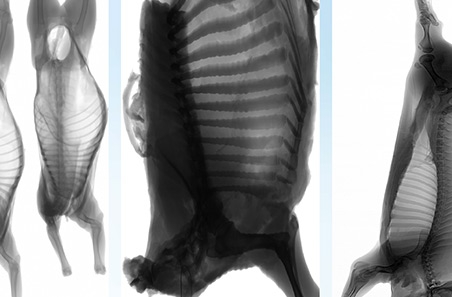
By Allan Barber
In April I wrote about Meat and Livestock Australia’s (MLA) plan to seek A$150 million from the Australian government to assist with the introduction of Dual Energy X-ray Absorptiometry (DEXA) objective carcase measurement (OCM) technology to all Australian meat plants. At that time neither the Australian Meat Industry Council (AMIC) nor the Australian Meat Processor Corporation (AMPC) were completely persuaded of the logic of committing the industry to such a large investment without further analysis and a robust business case.
The resulting review, performed by EY, has recommended that Australian meat processors and producers should go ahead with OCM projects in spite of a lack of consensus throughout the sector. The main finding confirms earlier studies which indicate significant benefits for both parts of the industry, if the technology is adopted. The review recommends AMPC and MLA to work together to achieve alignment between the two sectors which haven’t always agreed with each other.
At the moment not all processors are convinced of DEXA’s worth and the jury is still out on this, until pilot programmes have been completed. Ownership of the data is another issue which needs agreement, although state competition watchdog ACCC and MLA have previously supported the sharing of data between the parties. After the release of the EY review AMPC chairman Peter Noble announced the review had successfully provided a fact-based assessment of the DEXA rollout; AMPC stands “ready with industry to provide the research, development and education…and to answer the many questions raised by the review.”
He went on to say the processor body was encouraged by MLA’s plan for an A$10 million rollout of DEXA projects in four meat plants, co-funded by MLA and the participating processors, over and above the installations already underway at Teys and JBS, the two biggest processors in Australia. The pilot installations will provide the fact base for the rest of the industry – 90 meat plants in total – to base their decision on. Since the original $10 million, MLA has announced a further A$14 million to co-fund more installations by meat processors keen to accelerate adoption of the technology.
Earlier independent reviews of the benefits of DEXA technology estimated it could save the industry up to 20% of processing costs, while a report funded by AMPC found annual returns could reach A$420 million.
MLA proposes to work with willing partners to develop a single scientific measurement of lean meat yield as well as data collection systems for genetics, animal health, processing automation and other productivity improvements. MLA will also continue to work to identify the most appropriate industry funding model for an industry-wide rollout which suggests the money advanced so far has been provided out of producer levies. The government is presumably waiting to see the extent of industry uptake before it commits to the A$150 million originally sought.
In April I did a brief review of the equivalent situation in New Zealand and found the only instance of DEXA technology here was at Silver Fern Farms for lamb cutting, but this was not currently in operation. However there are several processors providing attributes of carcase measurement. The Australian position seems to be driven by producer suspicion of the processor carcase graders, while concerns have also arisen over anti-competitive conduct and market structures, allegations of anti-competitive behaviour at saleyards, misuse of buyer power and an unfair distribution of profits in the supply chain.
I must do further research into the large savings purported to be available from the introduction of DEXA measurement technology across the whole Australian meat industry, because so far I have found no suggestion the gains here would be proportionally as high. Perhaps New Zealand farmers are more trusting or our prime beef sector is too small in relative terms for the technology to produce sufficient benefits to justify the investment.


We welcome your comments below. If you are not already registered, please register to comment.
Remember we welcome robust, respectful and insightful debate. We don't welcome abusive or defamatory comments and will de-register those repeatedly making such comments. Our current comment policy is here.